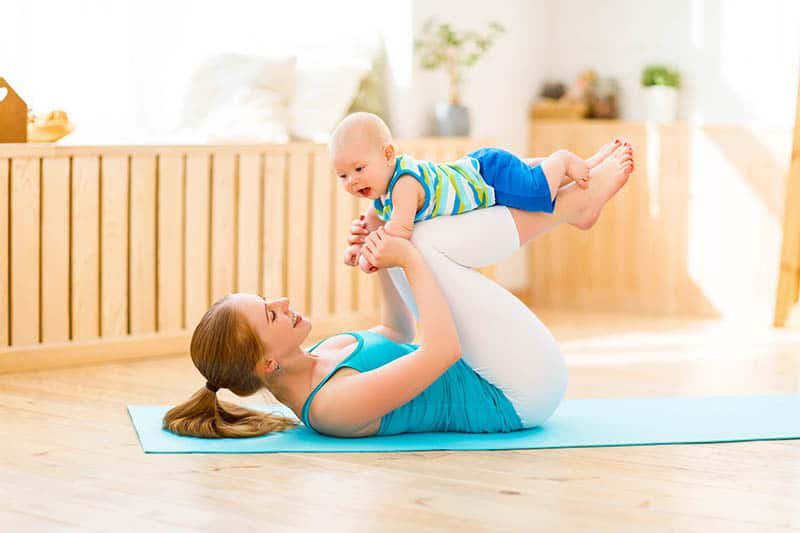To put it simply, yes, baby yoga is bound to be helpful to both you and your child on different levels.
For them, it’s more on the physical spectrum that aids in their development, while for you it’s finding the time to relax and decompress as well as help your body deal with postpartum stress, be it physical or mental.
Baby yoga at its core is nothing exceptionally complicated. Yoga poses range from the simple “tummy time” and baby massages we’re all used to doing with our kids, all the way to special yoga poses that include both mommy and baby.
The general idea behind it is to help kids who are facing difficulties in development due to the modernization of baby gear, as they too have started to suffer from becoming “lazier.”
The Problems Kids Face That Baby Yoga Helps Solve
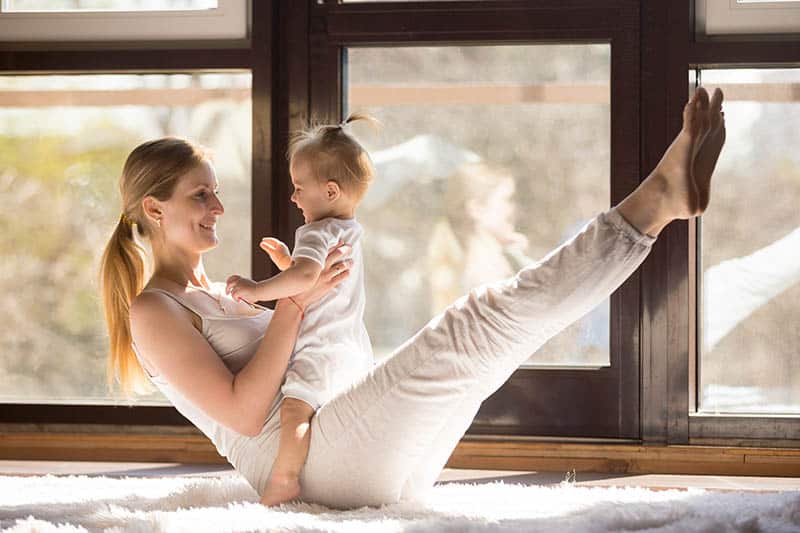
The so-aptly dubbed “container babies” who end up spending more time in strollers, car seats, baby swings, and similar are the ones who suffer from the laziness problem the most, in the same manner that we adults do nowadays.
They start being a lot less active, which leads to their metabolism slowing down, in turn ending up making colic a more frequent occurrence from the digestion problems that come alongside it.
There’s also the problem of this inactivity causing delays in the baby’s developmental cycle, as well as issues caused by abnormal head shapes due to constantly having it rest somewhere.
All of these get properly sorted out through the application of baby yoga exercises; this way your little one then gets to enjoy a healthier lifestyle.
The Benefits You Get From Attending Kids Yoga
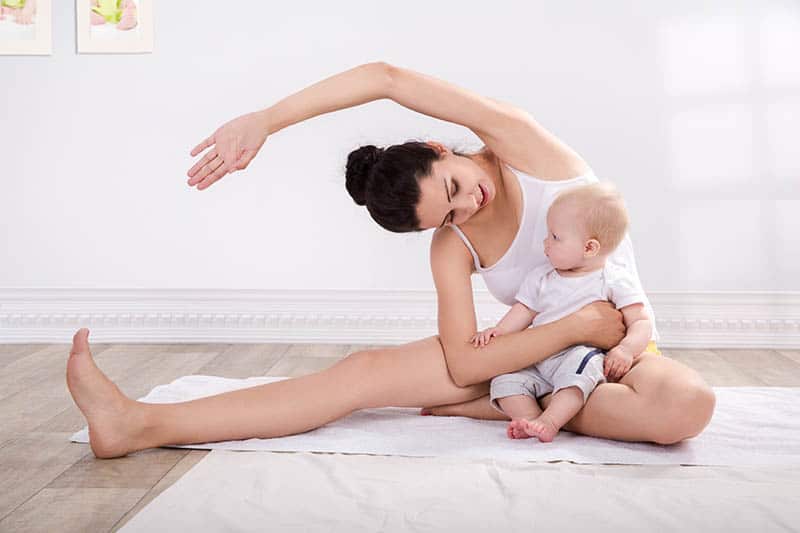
As I’ve mentioned earlier, it’s not just your little one who reaps the benefits of yoga, you will too.
Whether you’re a new parent or not, chances are that you are going to be struggling with postpartum stress and potential postpartum depression.
Taking baby yoga classes will help you deal with these in a warm, friendly, and accepting environment filled with like-minded individuals.
Whether it’s the other new moms who came here for the same reason as you or the certified yogi who’s there to teach you, it’s a place where you can get in touch with serenity and let your troubles melt away – at least temporarily.
A place where nobody is going to mind if your baby has an accident mid-session or starts feeling uncomfortable or crying for any reason. In fact, they’re more likely to help you out than anything.
Plus, it lets you expand your social circle and share advice with all of these other new mothers and the yoga teacher.
Your active little yogi may even foster some new friendships with the other kids. Anything is possible, as long as the kids yoga class is kept nice and interactive.
Now, I haven’t personally attended any of these baby yoga classes yet, but have managed do delve deep enough into it that I’d definitely give it a shot if hubby and I ever intend on expanding to baby #3.
That said, a couple of my mom friends who introduced the concept of child yoga to me in the first place described the experience they had for their first time at the yoga studio:
The process of baby yoga

One session can range anywhere from 30 minutes to around an hour.
The yoga instructor is usually someone certified to give these instructions in the first place and not just any random person off the street – usually either pediatricians or occupational therapists themselves, but there are outliers.
There are two options to choose from.
There’s the prenatal yoga classes that focus on yoga moves to help mom prepare her mind and body to deliver her new baby into this world.
Then, there’s also the postnatal yoga or the postpartum yoga classes, which include the baby in the exercises.
The latter, of course, being the focus here.
One thing to keep in mind before starting is that this is intended for babies who have developed some level of motor skill functionality like head movements. These are usually infants that are at least between 6 to 8 weeks of age.
The session starts off with a topic in mind, a general term on which the participants can focus.
Whether it’s a positive topic like happiness or serenity, or something with a more dour tone like stress or sadness, the idea of the session then is to try and achieve the positive feeling or to help dissolve the miasma of the negative emotion.
Think of it as a guideline – a placebo effect that’s meant to serve as something to drive you forward should you need some sense of direction.
The class itself consists of a mix of light stretches serving as yoga practice, yoga moves easy enough for your child to perform, and breathing exercises to help you decompress after a long day.
The idea is to help encourage your little yogi’s muscle activity to both aid him in further fine motor development and to help reduce or completely absolve the effects of colic and other stomach issues by keeping his body active and metabolism going.
It seemed to have worked well enough for my mom friends as they’ve claimed it not only helped them deal with everyday stress as individuals, but also helped foster a stronger bond between them and their own babies, thanks to the level of intimacy the exercises provided.
It also helped them realize just how intricate a baby can be and how the littlest things can make the biggest of differences.
Before You Start
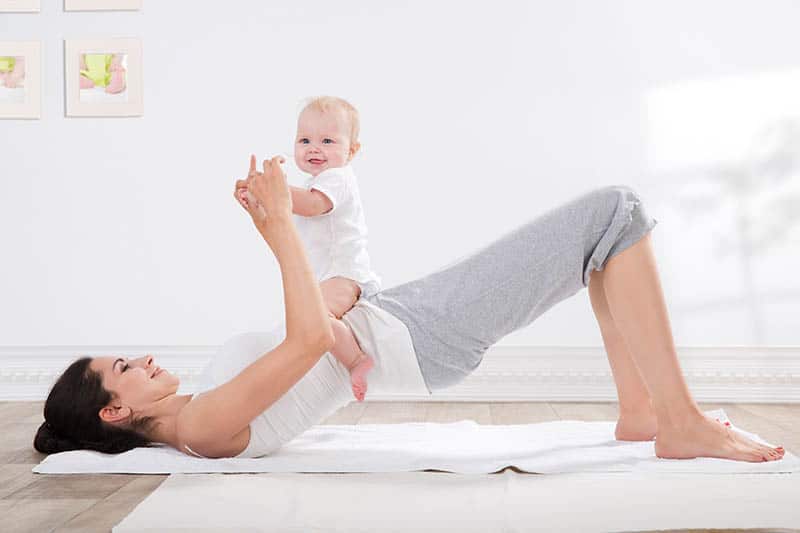
While this may all sound well and good, there are still some safety precautions that need to be taken before you go into any sort of exercise, no matter how light it may be.
Always make sure to check with your doctor if there are some lingering side effects from child delivery so you don’t risk causing any unnecessary complications down the line.
For instance, if you’re still suffering from diastasis recti, you may want to carry a postpartum recovery belt and notify your yoga instructor about it so he or she can adjust your routine accordingly.
This usually means no yoga exercises that apply stress to those separated core muscles so they can properly recover.
You should also take care to stretch slowly and carefully, stopping at any time where you might feel some level of discomfort. You don’t want to get caught in a cramp with your baby right in your lap.
The same applies to the exercises themselves. The yoga class is meant to be a relaxing place. Nobody is forcing you to do them and nobody expects you to.
If you start feeling fatigued or you find that a position is making you feel uncomfortable or is causing you pain, just stop, take a seat on your yoga mat, entertain your child, and wait for the next one.
And, as mentioned earlier, don’t worry about people giving you the stink eye here because your baby wants to feed or is feeling uncomfortable themselves.
Chances are the other mamas’ babies are going to feel the exact same way and it’s totally fine to pause to do so. After all, the space is meant to be free of judgment, and full of acceptance and understanding.
Finally, one of the most important things to look out for is to make sure that your baby is ready and/or willing to do this.
He needs to be able to freely move his head up and down to participate in the exercises, otherwise it’ll prove to be a difficult, if not almost insurmountable task for him to take part in many of the yoga poses alongside you.
Or, maybe your little one just isn’t into taking baby classes for yoga and may not even need them, depending on how well-developed he is.
There is absolutely no need to force him into this if everything is fine with him health-wise. You can always find something else to do together.
Working Out At Home
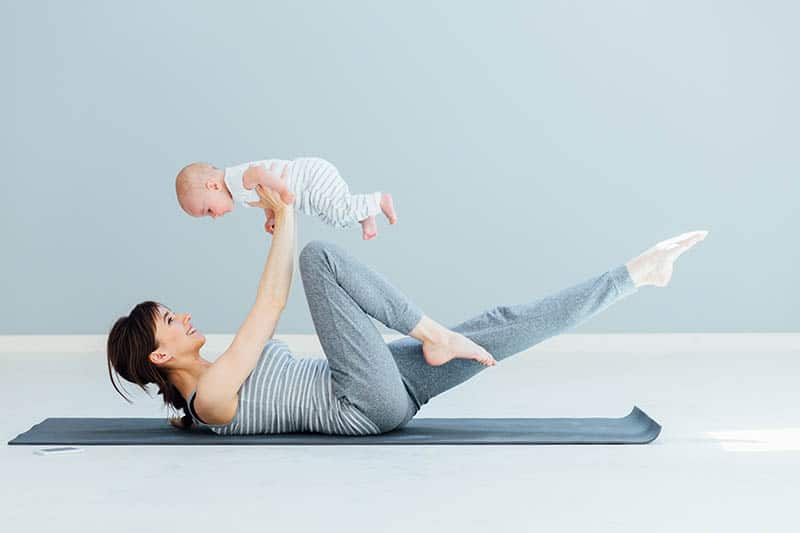
Baby yoga can even be done from the safety of your own home if you’re more of an introverted person.
The poses and the breathing exercises are easy enough to look up online, and there are videos that explain them in detail. All you’ll need is a yoga mat and some time on your hands.
Check out the example below that’s sure to get you warmed up to the idea.
A word of warning though: You shouldn’t perform this one if you’re suffering from diastasis recti, as this is one of the exercises that focuses on that bit in particular.
The superhero baby pose
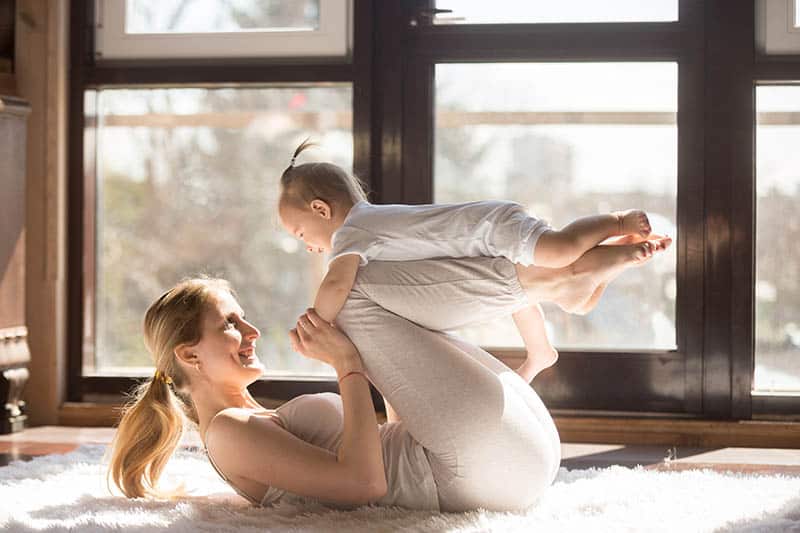
A rather simple baby yoga pose where the idea is to lie down on the mat on your back and pull your legs up toward your chest. Keep them level with each other and have your shins parallel to the ground.
After you’re in position, place your child on your shins and keep him secure with your hands.
Then softly rock and sway him up and down to give the effect of flight. It’s bound to make most babies cheer in excitement since they all really love being raised up.
Think of this exercise as an improved version of tummy time, one with a lot more interactivity between mommy and child, providing more ground for your bond to prosper.
It’s an exercise where you get to strengthen your pelvic floor and your core muscles, while the baby gets to improve on his upper body strength and get his stomach back in action to jumpstart his metabolism back to a proper pace.
There are many more poses that encompass the baby yoga spectrum, but really it’s anything that can constitute as light stretching.
Just make sure to find the ones that you and your baby feel sit the best with you and create your own unique routine for the best effect.
In Conclusion
Baby yoga gifts us a slightly different and unique way of bonding with our little ones, while also maintaining our health and fitness, be it mental or physical.
It’s a set of simple stretches that can be done by certified yogis in a professional environment or by yourself through a bit of research at whatever spot you please.
I’d recommend the outdoors so you can also sync with the nature around you on top of everything else.
The most important thing to note is that you shouldn’t engage in it without your doctor and/or pediatrician deeming it safe for both you and the baby to do so.
While a really great activity that both you and your little one can enjoy, it’s not mandatory to start right away. Be patient until you get the green light and then exercise to your heart’s content.
Like this post? Please share or pin it for later. You can also stay in the loop and follow us on Facebook, Instagram and Pinterest.
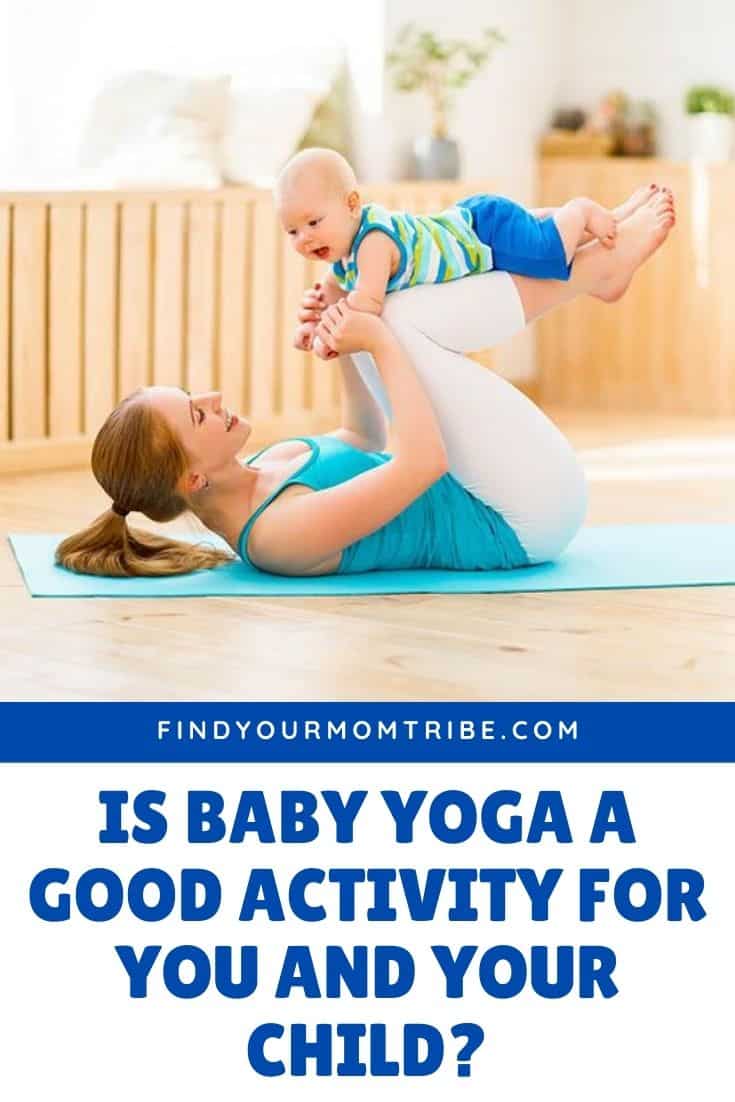
This post contains affiliate links. Please see our full disclosure or more info.

